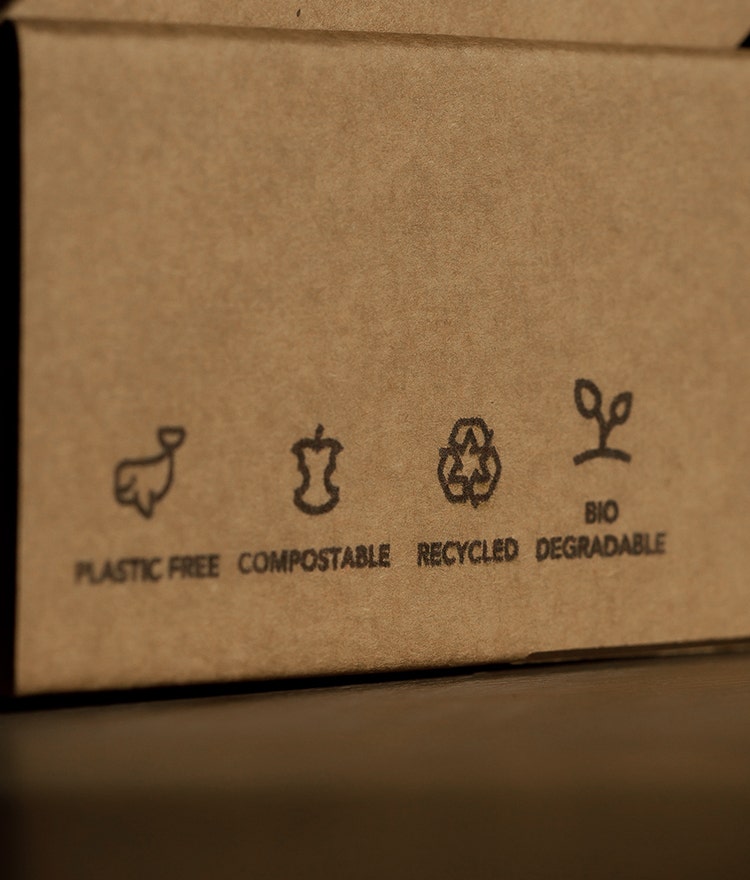
Have you ever bought a product that's chemical free? Or, have you enjoyed an all-natural snack? Hint: these are trick questions!
In today's world, where environmental consciousness is on the rise, companies are quick to jump on the "green" bandwagon to appeal to eco-conscious consumers. However, not all that glitters is gold, and not every company's commitment to sustainability is as genuine as it may seem.
This phenomenon is known as "greenwashing" – and here’s how to spot it.
First things first: greenwashing basics
Greenwashing is when organizations exaggerate their environmental efforts to appear more environmentally friendly than they actually are. The term emerged as a result of consumers becoming increasingly concerned about the environmental impact of their purchases (which is something we are all here for at Happsy!).
While legitimate efforts towards sustainability are vital, greenwashing undermines these efforts by capitalizing on consumers' desire to make eco-friendly choices. It's essential to differentiate between companies genuinely striving for sustainability and those merely using it as a marketing ploy.
Identifying greenwashing requires a critical mindset and a willingness to scrutinize the claims made by companies. Instead of blindly accepting buzzwords, consumers should investigate the authenticity of a company's eco-friendly claims. The responsibility is on us – all of us.
Terms commonly used in greenwashing
Let's explore some commonly used terms in greenwashing and why they might not always indicate true sustainability.


1. "Natural"
The term "natural" is often employed to give the impression of a product that's pure, safe, free from harmful chemicals … sounds great, right? Still, it's crucial to remember that the term "natural" is not regulated and lacks a consistent definition across industries.
That is to say that a product labeled as natural might still contain synthetic or environmentally damaging components. Even a product labeled as 100% natural might still contain synthetic or environmentally damaging components, too. If you want to make an informed decision, read the ingredient list – not just the marketing content.
2. "Biodegradable"
The idea of products breaking down into harmless substances after disposal sounds appealing – especially when the alternative is taking up space in a landfill for thousands of years. However, the term "biodegradable" can be misleading.
For example, a product labeled as “biodegradable” might only degrade under specific conditions that might not be present in a landfill or the ocean where they end up. PLA is often marketed as being compostable, which is true when it is sent to a commercial treatment plant … if you simply throw it on your compost pile, not so much.
True sustainability involves considering the entire lifecycle of a product and its impact on the environment. When you throw




3. "Recyclable"
Reduce, reuse, recycle – those are the basic tenets of sustainability that most of us are taught. The first two are pretty straightforward, but recycling can be convoluted.
While recycling is a crucial aspect of waste reduction, labeling a product as "recyclable" doesn't guarantee that it can be recycled efficiently. Some materials are technically recyclable but aren't widely accepted by recycling facilities due to practical limitations.
Effective recycling requires accessible infrastructure and conscientious consumer participation. (Want to hold up your end of the bargain? Check out our guide to recycling at home.)
4. "Eco-friendly"
The term "eco-friendly" implies that a product has minimal environmental impact. But what does it really mean? How is it defined, specifically? What’s the standard?
We can’t answer these questions, because the answers don’t exist. The term “eco-friendly” on its own is vague, unstandardized and undefined. You can market a product as “eco-friendly” at any time to anybody for any reason or no reason at all.
Look for certifications from reputable organizations that validate a product's sustainability claims. (More on that later.)




5. "Carbon neutral"
Becoming "carbon neutral" involves balancing the carbon emissions a company produces with equivalent offsets, such as tree planting or investing in renewable energy.
While striving for carbon neutrality is an admirable goal, don’t take it at face value. Research whether a company is genuinely reducing their carbon emissions at the source through sustainable manufacturing practices … or merely planting trees as a way to appear environmentally responsible.
What Happsy means when we use "green" words
None of the words on this list are inherently bad or misleading. And neither is marketing products as sustainable. Think about it: if products couldn’t be labeled as green, sustainable or eco-friendly, we as consumers wouldn’t have the first clue where to start when trying to shop mindfully. So, what’s the right way to do it?
Here’s the Happsy way.
All those undefined claims like “natural” or “green” or “renewable” – when we use them, we define them. If we make a claim, we qualify it. Our mattresses are healthier because they’re certified organic and made without materials or substances known to cause harm to human health. Our organic materials are greener because they aren’t farmed using pesticides that pollute the air, water and soil.
At Happsy, we value transparency and proof. As a consumer, you should too.
Remember! Certifications are your best shopping buddy


Another way that companies can qualify their environmental marketing claims is through reputable third-party certifications. Because words like “organic” and “non-toxic” that don’t mean a whole lot when you don’t have proof mean everything when you’ve got it. At Happsy, we’re proud of the certifications that our organic and non-toxic products have earned. It’s why you can trust that when we say that our products are safer, healthier, greener, better, we mean it.
Wondering just which certifications to look for? Start here:
- Global Organic Textile Standard (GOTS) ensures that a product is certified organic and marks products that prioritize ecological and social sustainability.
- MADE SAFE® certifies products that have been screened against a list of thousands of chemicals known or suspected to be harmful towards human health. (Learn more about MADE SAFE.)
- GREENGUARD® Gold tests specifically for chemical emissions from consumer products and materials.
- UL Formaldehyde Free validates products that do not contain formaldehyde (often found in non-organic mattresses!) or formaldehyde precursors.
- Forest Stewardship Council® (FSC®) ensures that latex and wood meet rigorous environmental, social and economic criteria designed to protect lands, ecosystems and workers.
- Global Organic Latex Standard (GOLS) certifies organic latex and finished latex foam with a concentration on human health, safety and welfare and the environment in the manufacturing process.
Consumers hold the power to drive positive change through our purchasing decisions. While companies' increased focus on sustainability is a step in the right direction, it's crucial not to be swayed by greenwashing tactics.
By staying informed, questioning buzzwords and demanding transparency, we can hold everyone accountable for environmental claims. Genuine sustainability involves holistic efforts that extend beyond catchy marketing phrases, ensuring a healthier planet for generations to come.
Want to incorporate green living into your home life? Check out these everyday sustainability hacks.





